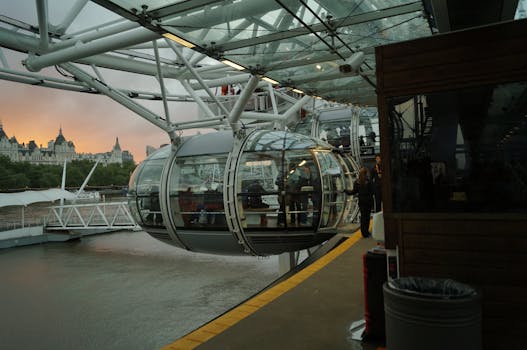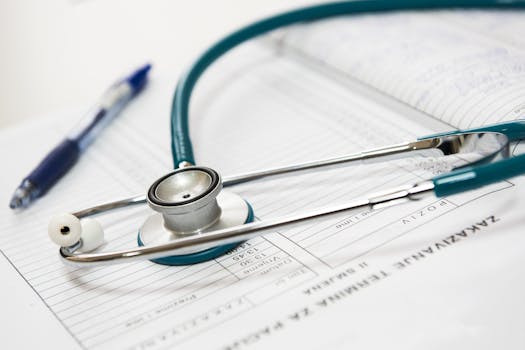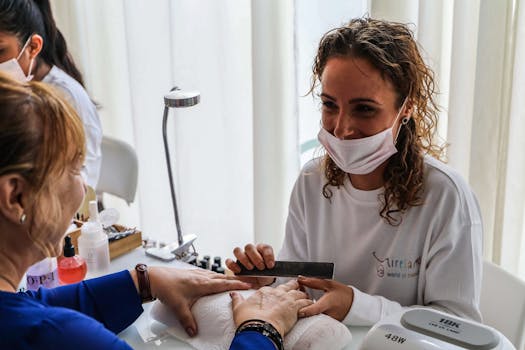The term medically necessary eye lift often arises when discussing surgical procedures required to improve vision or address health concerns related to eyelid functions. This type of eye lift is not merely for cosmetic enhancement but is typically undertaken to resolve issues that impair your daily life. Blepharoplasty, a surgical procedure to correct drooping eyelids, can be a critical intervention for those experiencing severe vision obstruction or discomfort.
Understanding Medically Necessary Eye Lift
A medically necessary blepharoplasty involves removing excess skin, muscle, and sometimes fat from the upper or lower eyelids. When the upper eyelids sag significantly, this may impede vision to an extent that it affects daily activities such as reading and driving. In such cases, insurance often covers the procedure as it is deemed necessary for health reasons rather than purely aesthetic concerns.
This distinction between an elective and medically necessary procedure is crucial. While cosmetic blepharoplasty focuses on reducing signs of aging, a medically necessary eyelid surgery addresses functional problems. Conditions like ptosis, where the eyelid droops due to weak muscles, often necessitate a surgical solution.
Conditions That Might Require Medical Necessity
Several conditions could make an eye lift medically necessary:
- Ptosis: A condition where the upper eyelid droops over the eye, potentially restricting vision.
- Dermatochalasis: Excess skin around the eyes, which can lead to visual impairment, discomfort, or irritation.
- Entropion or Ectropion: Inward or outward turning of the eyelid edges, causing discomfort and potential damage to the eye surface.
Procedure and Recovery
In cases of medical necessity, blepharoplasty involves a comprehensive evaluation by a qualified surgeon. They will assess the degree of impairment and determine if the procedure can provide significant benefits. The surgery typically lasts about one to two hours and is often conducted on an outpatient basis.
Recovery from a medically necessary eye lift involves a few weeks of care. Patients might experience bruising and swelling initially. It’s advisable to avoid strenuous activities and follow the surgeon’s post-operative instructions closely to ensure a safe recovery process.
Insurance Coverage for Medically Necessary Eye Lift
One of the primary concerns for patients is whether their insurance will cover the cost of a medically necessary eyelid surgery. Insurance providers require documentation proving the medical necessity of the procedure. This usually involves photographs and eye tests conducted by your ophthalmologist or surgeon to demonstrate the impact on vision.
If you meet the criteria, the procedure is typically covered by most insurance plans. It’s essential to work closely with your healthcare provider to ensure all necessary documentation is submitted to facilitate approval.
Preparing for Your Consultation
If you believe an eye lift may be medically necessary for you, the first step is having an open discussion with your healthcare provider. Highlight how your eyelids affect your quality of life and any limitations you’re experiencing. During your consultation, discuss your medical history, current medications, and any previous surgeries.
Living a healthy lifestyle, including maintaining a balanced diet and skin care regimen, can be crucial in your surgical outcomes. To learn more about eco-friendly skincare that supports overall health, check out our article on sustainable products and practices for healthy skin.
Medically Necessary Eye Lift: Is It Right for You?
Determining whether a medically necessary eye lift is appropriate involves a personalized assessment of your medical needs. Always consult with a healthcare professional who can guide you through the choices and provide the best recommendations for your situation. Take control of your health and well-being by exploring all available options and understanding what a medically necessary blepharoplasty might entail for you.
- A medically necessary eye lift corrects health-related vision impediments, not just cosmetic issues.
- Conditions like ptosis and dermatochalasis may require this procedure.
- Insurance may cover the cost if the surgery is proven to be medically necessary.
- Preparation and recovery are essential parts of the surgical process.
- Consulting with healthcare providers is vital to determine the necessity of the procedure.
FAQs
What defines a medically necessary eye lift?
A medically necessary eye lift is defined by the need to correct vision-impairing conditions caused by drooping eyelids, rather than for cosmetic purposes.
How do I know if my eyelid surgery is covered by insurance?
Insurance typically covers eyelid surgery if it significantly impacts your vision or quality of life. Documentation from your healthcare provider is necessary to prove medical necessity.
What symptoms might suggest the need for a medically necessary eye lift?
Symptoms include obstructed vision, eye irritation, or difficulty keeping eyes open. These could indicate a medical need for eyelid surgery.
How long is the recovery period for a medically necessary blepharoplasty?
The recovery period generally takes a few weeks, with initial discomfort, swelling, and bruising that gradually improves. Follow your surgeon’s care instructions for the best outcomes.
Where can I find reliable information about eye health?
You can find reliable information on eye health and related surgeries by consulting trusted resources such as The American Academy of Ophthalmology and discussing with your healthcare provider.






